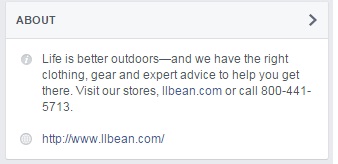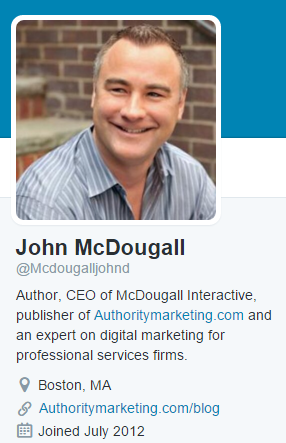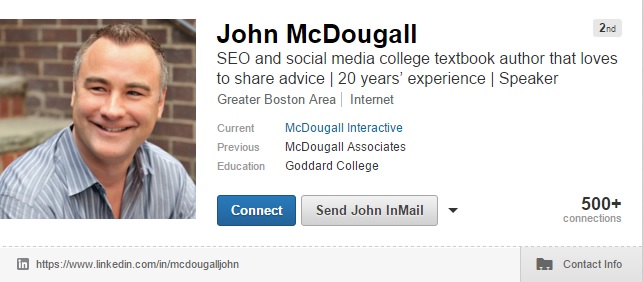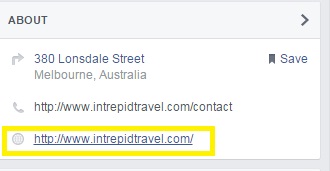Conventional wisdom suggests that people love talking about themselves. So why is it so hard when it’s time to put it all in writing?
“It sounds like I’m bragging too much”
“I don’t want to look like a know-it-all”
These are just some of the complaints I’ve heard from clients struggling to write their own social media profile.
I don’t blame them. Add the character constraints, the hard to thread line of looking professional but not boring, accomplished but not boastful, almost seems impossible.
Social media is supposed to be fun. But it doesn’t seem that way when writing your business’s profile, especially because it can affect how many likes, follows, and connections you get.
In this blog post, we’ll cover the general steps to writing an amazing social media profile that applies to all networks.
The Makings of an Audience Engaging Social Media Profile, Part by Part
- Your Name
In search engines, your user name, or what shows up in the search address, is what counts for improving your rank in search engine results. For social media though, what counts is your profile name — be it your full name or company name. Enter the complete name you want people to find you, because that’s what social networks consider in their algorithms.
- Your Elevator Pitch (Twitter Bio, LinkedIn Headline, Facebook Short Description)
Your professional bio on social media is akin to your elevator pitch, it’s what people use to gauge whether they want to follow you or not. In Twitter, it’s your 160-word bio, in Facebook, it’s the short description at the side of your page, and in LinkedIn it’s the headline beside your profile picture.
Your bio needs to make a big impression in a short span of time. You only have five to ten seconds or two to three sentences, or, as in the case of Twitter, 160 characters. Cut the buzzwords and empty claims; go straight to the value you deliver. Below are some examples:
Facebook:
L.L. Bean Clothing’s Facebook Page description is short and simple. It tells viewers exactly what they offer — clothing and gear for outdoor lovers — and how to get their merchandise.
 LinkedIn
LinkedIn
Joan Stewart’s LinkedIn headline has a clear call-to-action, attention-grabbing statement, a job title, and relevant keywords in two sentences.
 Twitter
Twitter
Calvin Lee (@mayhemstudios) has an attention-grabbing and funny social media bio, and it’s packed with relevant keywords, plus an extra credibility booster (subtle ‘testimonial’ from Chris Brogan) in 160 characters.
 Tips for Writing Your Social Media “Elevator Pitch”
Tips for Writing Your Social Media “Elevator Pitch”
- Not sure what to write? Check out your competitors and draw inspiration from the keywords and value statements they use
- Answer the reader’s burning question, “Why should I connect with you?” and more importantly, “What’s in it for me?”
- Use this reliable formula: “I (what you do) for (your target audience) so they can (desired benefit or goal)”
- Your Profile Picture
Should you use your own picture or a company logo? If your business is well-known, even within your industry or local area, then using a company logo makes sense. But if you’re just starting out, it’s easier to make people associate your brand name with a friendly face.
Once you’ve chosen a picture though, stick to it across all your profiles. That way, potential followers can easily recognize when they come across your profile in a different network.
Don’t forget to rename the photo to include your target keywords and the name in your profile. So instead of IMG02090.jpg, use “brand name” + “your name: (i.e. authoritymarketingJohnMcdougall.jpg). Edit the alt text using the same strategy, too.


- Your Profile Body
Besides Twitter, other social networks allow you to add more information about your personal or corporate brand. Many users skip over these details, thinking it’s not really important or their business page. You’re losing out on tons of SEO and social media value, if you ask me.
How? The books, movies, shows, long company description, address, publications, work history, and all those other feeds are excellent places to add relevant keywords that not only benefit your SEO, but could also help your target customers find you!
For LinkedIn:
Below is a snapshot of Danny Gilligan’s LinkedIn profile. He’s an International Balance Sheet Accountant at LinkedIn. His work doesn’t have anything to do with marketing at all, but as you can see all the fields in his profile are filled out. He even included relevant links of his work at LinkedIn and at previous employers.

- Summary: Include a short list of your most notable business or work related achievements. Use bullet points and short paragraphs to make this easier to read
- Portfolio or publications: Add videos, URLs, and other media files to your profile to give people a better idea of what you do.
- Work history: Don’t list every single job or business venture you tried. Keep it relevant to what you’re doing or what you want to accomplish now.
- Skills, volunteer information, and education: Don’t skip these fields. It’s a great way for people with similar interests to find you. Though they may not directly lead to more business, it can help potential connections with similar backgrounds to find you.
For Facebook:
Intrepid Travel has an amazing Facebook page that tells their story. It comes complete with a special tab showing trip reviews.

- Category: What kind of business or page do you operate? Choose correctly to ensure you get qualified leads. Remember, it’s possible for businesses in different industries to have similar names. You don’t want to be confused with a charity with the same name if you’re running a for-profit operation, right?
- Start info: Tell people when your business started
- Address: If you’re a local or brick and mortar business, put your address here. This is how people can ‘check-in’ when they visit your store. It’s also a great way to get new customers. Sometimes, people use Facebook to look for new places of interest, such as restaurants, shops, salons, and more, by typing what they’re looking for + their location. If your address is listed near the searcher’s location, your page will show up on the search results.
- Long description: Anything that didn’t fit in your page’s main description, you can put it here. Tell people about your brand’s missions, who your target customers are, or who you’ve worked with in the past to give them an idea of your credibility. You can also add links to your previous works and other websites.
- Contact info: List the best phone number and email address to contact you.
- Your Website Link
You are allowed to link to at least one website from the main page of your profile, regardless of the network. In Facebook, you can do it on the box showing under your profile picture. In LinkedIn, it’s shown along with your other contact information, and you’re allowed to link to your “Company Website” and “Personal Website.”
If you want to increase the leads you get through social media, and at the same time track which site gives you more traffic, create a specific landing page with a special offer for each network. For instance, the link on your Twitter account can lead to a page that gives visitors a discount or free e-book in exchange for following you. The same can be done in Facebook, LinkedIn, and other social networks.

Update Often, Post Often
Social media isn’t a set it and forget it kind of thing. You should post updates and talk to your audience regularly. The same goes for your social media bio. As your skills, portfolio, expertise, and business expands, so should your online bio.
Update it at least once a year, so the audience you get matches the type of people you want to do business with.
